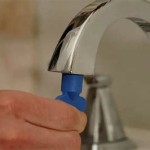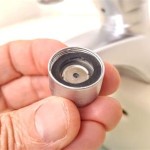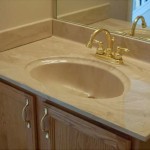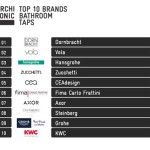Contemporary Bathroom Pedestal Sinks: A Stylish and Functional Choice
Contemporary bathroom pedestal sinks represent a stylistic evolution of a classic fixture, offering a blend of visual appeal and practicality suitable for a wide range of bathroom designs. These sinks, characterized by sleek lines, minimalist aesthetics, and innovative materials, serve as both a functional washing station and a focal point within the bathroom space. Understanding the features, benefits, and considerations associated with contemporary pedestal sinks is crucial for homeowners and designers seeking to integrate this elegant element into their bathroom projects.
Design Elements of Contemporary Pedestal Sinks
Contemporary pedestal sinks depart from the ornate and traditional designs of the past, embracing a more streamlined and minimalist approach. Key design elements include:
Clean Lines and Geometric Shapes: Contemporary designs often feature sharp angles, smooth curves, and geometric shapes that create a sense of modern sophistication. Unlike the intricate detailing often found in antique or Victorian-style pedestal sinks, contemporary models prioritize simplicity and visual clarity.
Material Innovation: While traditional pedestal sinks were primarily crafted from vitreous china or porcelain, contemporary designs incorporate a wider range of materials. These may include tempered glass, cast stone, stainless steel, and innovative composite materials. Each material offers distinct aesthetic and performance characteristics, allowing for greater design flexibility.
Color Palette: The color palette of contemporary pedestal sinks extends beyond the standard white or off-white options. While white remains a popular choice for its versatility, contemporary sinks are available in various colors, including black, gray, beige, and even vibrant hues. The availability of different colors enables homeowners to coordinate the sink with the overall bathroom color scheme.
Slim Profiles: Contemporary pedestal sinks often feature slimmer profiles compared to their traditional counterparts. This reduction in bulk contributes to a more open and airy feel within the bathroom. The pedestal itself might be thinner or creatively shaped to further enhance the sense of lightness and space.
Integration of Functionality: While the primary function of a pedestal sink is washing, contemporary designs may incorporate subtle features to enhance usability. This can include integrated towel bars, small shelves within the pedestal for storage, or even built-in soap dispensers. These details improve the practicality of the sink without compromising its aesthetic appeal.
Benefits of Choosing a Contemporary Pedestal Sink
Contemporary pedestal sinks offer several advantages that make them a compelling choice for modern bathrooms:
Space Efficiency: Pedestal sinks are inherently space-saving fixtures, particularly well-suited for small bathrooms or powder rooms where maximizing floor space is essential. The absence of a vanity cabinet underneath the sink creates a more open and less cluttered feel, making the room appear larger.
Aesthetic Appeal: Contemporary pedestal sinks serve as both a functional fixture and a design element. Their clean lines and minimalist aesthetics can enhance the overall visual appeal of the bathroom, adding a touch of modern elegance. The wide variety of designs and materials available ensures that homeowners can find a sink that complements their personal style and the existing bathroom décor.
Easy Installation: Pedestal sinks are generally easier to install compared to vanity-style sinks, as they require fewer components and less complex plumbing connections. This can translate to lower installation costs and a faster project completion time. However, professional installation is still recommended to ensure proper alignment and secure mounting.
Cost-Effectiveness: Pedestal sinks often have a lower initial cost compared to vanity sinks, making them an attractive option for budget-conscious homeowners. While the price can vary depending on the material and design, pedestal sinks generally represent a more affordable option for updating a bathroom.
Ease of Cleaning: The simple design of pedestal sinks makes them relatively easy to clean and maintain. The smooth surfaces of the sink and pedestal can be quickly wiped down with a damp cloth, and there are fewer crevices or corners where dirt and grime can accumulate.
Considerations When Selecting a Contemporary Pedestal Sink
While contemporary pedestal sinks offer several advantages, it is essential to consider certain factors before making a purchase:
Storage Limitations: The primary drawback of pedestal sinks is the lack of storage space. Unlike vanity sinks, which offer ample room for storing toiletries and other bathroom essentials, pedestal sinks provide minimal or no storage. Homeowners who require significant storage space may need to supplement the pedestal sink with additional storage solutions, such as wall-mounted cabinets or shelving units.
Plumbing Visibility: The plumbing underneath a pedestal sink is typically visible, which can detract from the overall aesthetic appeal. While some contemporary pedestal sinks are designed to conceal the plumbing with a decorative shroud or pedestal base, others leave the pipes exposed. Homeowners may need to consider the appearance of the exposed plumbing and take steps to minimize its visual impact.
Wall Support: Pedestal sinks rely on both the pedestal itself and the wall for support. It is essential to ensure that the wall is sturdy enough to bear the weight of the sink, especially when it is filled with water. If the wall is weak or damaged, it may need to be reinforced before installing the pedestal sink.
Accessibility Considerations: Standard pedestal sinks may not be suitable for individuals with mobility impairments, as they offer limited knee clearance. Homeowners who require greater accessibility may need to consider a wall-mounted sink or a pedestal sink with a shallower depth to accommodate a wheelchair or other mobility aids.
Material Durability: The durability of a contemporary pedestal sink depends on the material used in its construction. Some materials, such as vitreous china and porcelain, are highly durable and resistant to scratches and stains. Other materials, such as glass or certain composite materials, may be more susceptible to damage and require more careful maintenance.
Matching Contemporary Pedestal Sinks with Bathroom Styles
Contemporary pedestal sinks are versatile enough to harmonize with various bathroom design styles. Below are some examples:
Minimalist Bathrooms: The sleek lines and lack of ornamentation in many contemporary pedestal sinks make them a natural fit for minimalist bathrooms. Pairing a simple, white pedestal sink with clean, geometric tiles and minimal accessories creates a serene and uncluttered space.
Industrial Bathrooms: Pedestal sinks made from materials like stainless steel or concrete can complement the raw and edgy aesthetic of industrial bathrooms. Exposed plumbing and utilitarian fixtures can further enhance the industrial feel.
Scandinavian Bathrooms: The emphasis on natural materials and bright, airy spaces in Scandinavian design aligns well with the simplicity of contemporary pedestal sinks. Choosing a sink in a neutral color and pairing it with light wood accents can create a warm and inviting atmosphere.
Modern Farmhouse Bathrooms: While farmhouse style traditionally leans towards more rustic elements, a contemporary pedestal sink can provide a stylish contrast. Opting for a sink with a slightly more traditional shape but in a modern material or color can create a balanced and updated farmhouse look.
Transitional Bathrooms: Transitional bathrooms blend traditional and contemporary elements, and a well-chosen pedestal sink can act as a bridge between the two styles. Selecting a sink with subtle curves but in a clean, modern finish can tie the room together.
Installation Tips for Contemporary Pedestal Sinks
Proper installation is vital for ensuring the stability and longevity of a contemporary pedestal sink. Here are some helpful tips:
Professional Installation: While DIY installation is possible, professional installation is generally recommended, especially for inexperienced homeowners. A professional plumber can ensure that the sink is properly aligned, securely mounted, and that all plumbing connections are watertight.
Wall Reinforcement: Before installing the pedestal sink, inspect the wall to ensure that it is structurally sound and capable of supporting the weight of the sink. If the wall is weak or damaged, reinforce it with additional framing or backing material.
Proper Alignment: Carefully align the pedestal sink with the wall and ensure that it is level before securing it in place. Use shims to adjust the height and alignment of the sink as needed.
Secure Mounting: Use appropriate anchors and fasteners to securely mount the pedestal sink to the wall. Follow the manufacturer's instructions for the specific type of sink and wall construction.
Plumbing Connections: Connect the water supply lines and drainpipe to the sink, ensuring that all connections are tight and leak-free. Use Teflon tape or pipe sealant to prevent leaks at threaded connections.
Caulking: Apply a bead of caulk around the base of the pedestal and along the seam where the sink meets the wall. This will help to seal the sink and prevent water damage.

54 Pedestal Sinks To Streamline Your Bathroom Design

10 Easy Pieces Modern Pedestal Sinks Remodelista

54 Pedestal Sinks To Streamline Your Bathroom Design

20 Fascinating Bathroom Pedestal Sinks Home Design Lover Small Modern Sink

54 Pedestal Sinks To Streamline Your Bathroom Design

33 Modern Pedestal Bathroom Sinks To Make A Statement Digsdigs

54 Pedestal Sinks To Streamline Your Bathroom Design

Ba 376 15 Modern Bathroom Pedestal Sink With Walnut Oak Vaneer Fini

Pedestal Sink Is A Classic Choice For Modern Bathroom The Seattle Times

24 White Pedestal Sink Modern Bathroom Vanity With Medicine Cabinet Faucet And Linen Side Option
Related Posts







